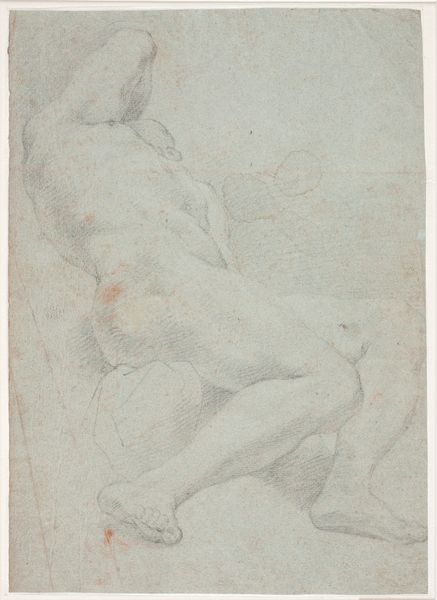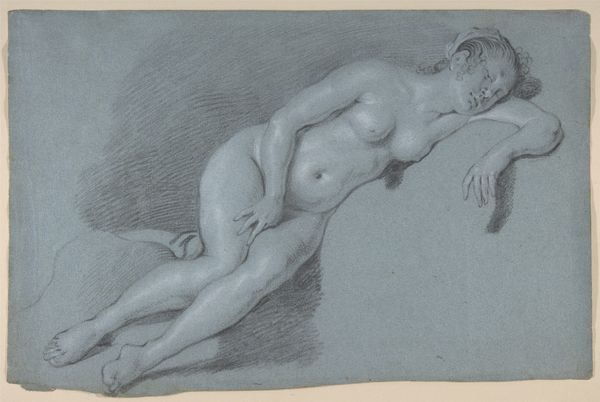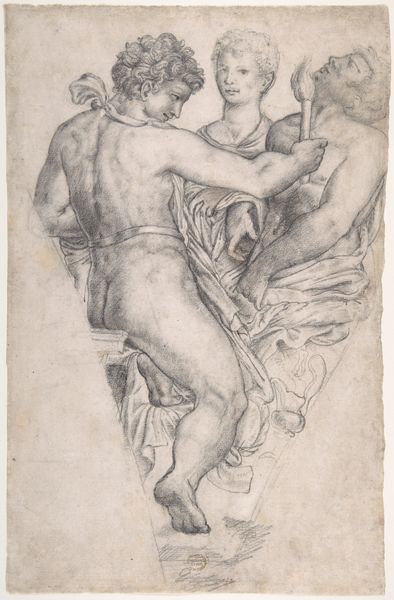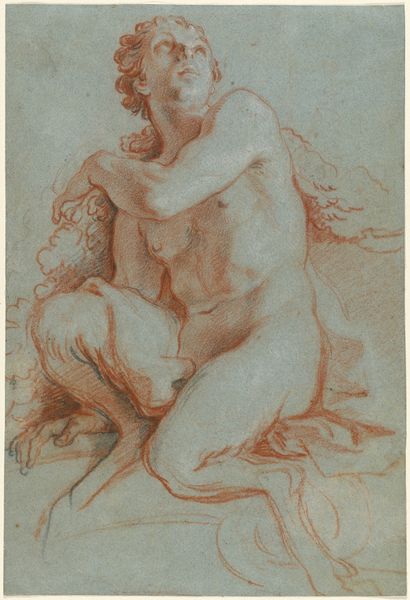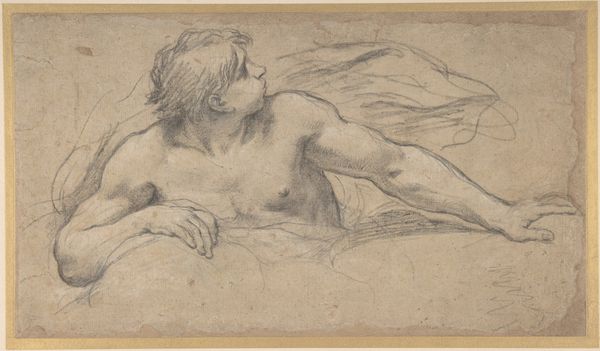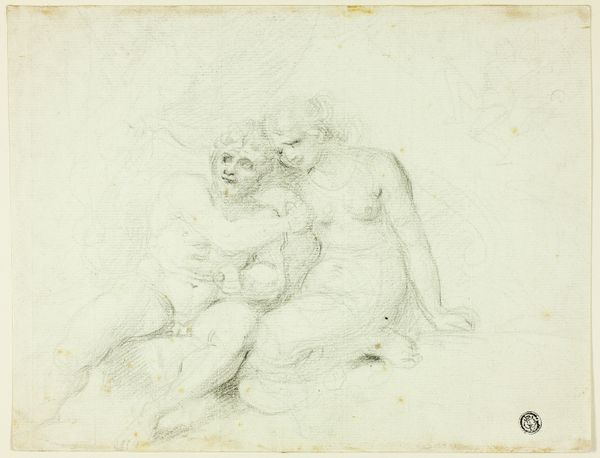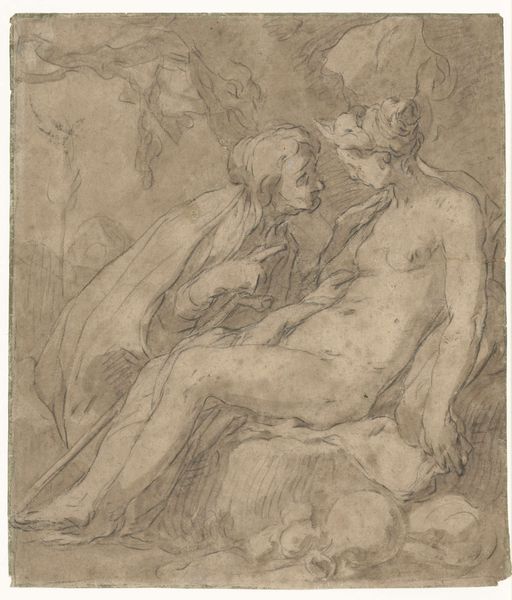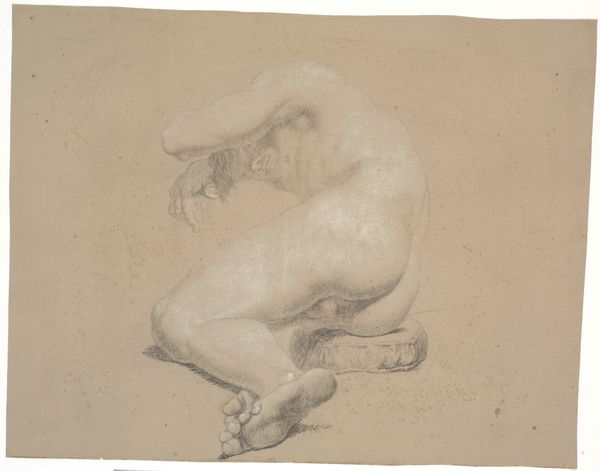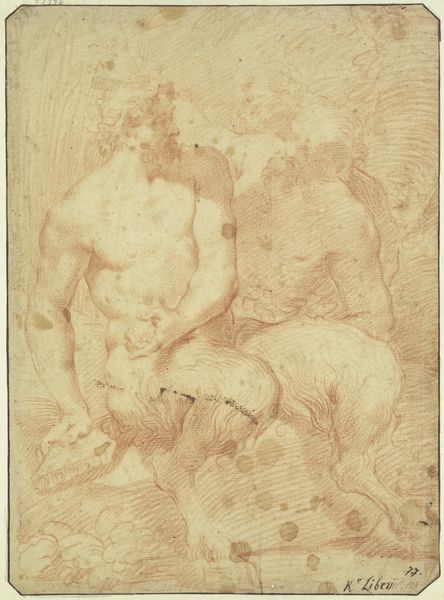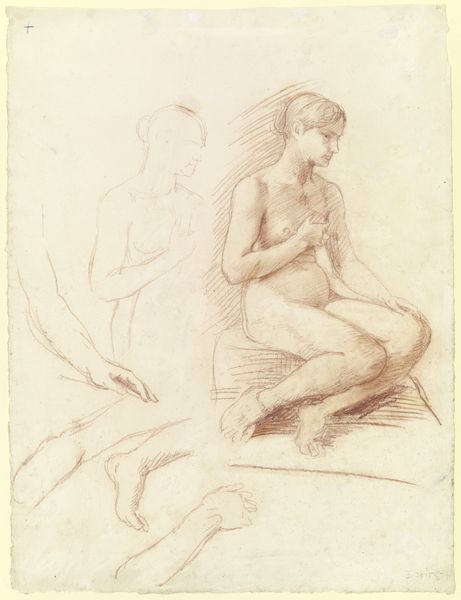
Copy after Michelangelo’s "Aurora", from the tomb of Lorenzo de’ Medici in the Sagrestia Nuova in S. Lorenzo, Florence 1548 - 1628
0:00
0:00
drawing, paper, charcoal
#
pencil drawn
#
drawing
#
charcoal drawing
#
figuration
#
paper
#
pencil drawing
#
charcoal
#
italian-renaissance
#
nude
Dimensions: 278 mm (height) x 203 mm (width) (bladmaal)
This is Jacopo Palma the Younger's copy of Michelangelo’s "Aurora", from the tomb of Lorenzo de’ Medici, rendered in drawing. Notice the reclining female figure, Aurora, symbolizing dawn, caught in a moment of awakening. Her languid pose and the subtle tension in her limbs speak to the complex transition from sleep to wakefulness, from darkness to light. The allegorical motif of 'dawn' can be traced back to ancient Roman and Greek art, where goddesses of the dawn were often depicted with rosy fingers, opening the gates of the sky for the sun's chariot. Here, Aurora's form and the soft chiaroscuro create an emotional landscape, reflecting the liminal space between night and day. The same motif resurfaces throughout the Renaissance, often intertwined with themes of resurrection and rebirth. The image resonates with the deep-seated human desire for renewal and the cyclical nature of life itself. This visual language taps into our collective unconscious, a shared memory of archetypal symbols that stir profound emotions.
Comments
No comments
Be the first to comment and join the conversation on the ultimate creative platform.
